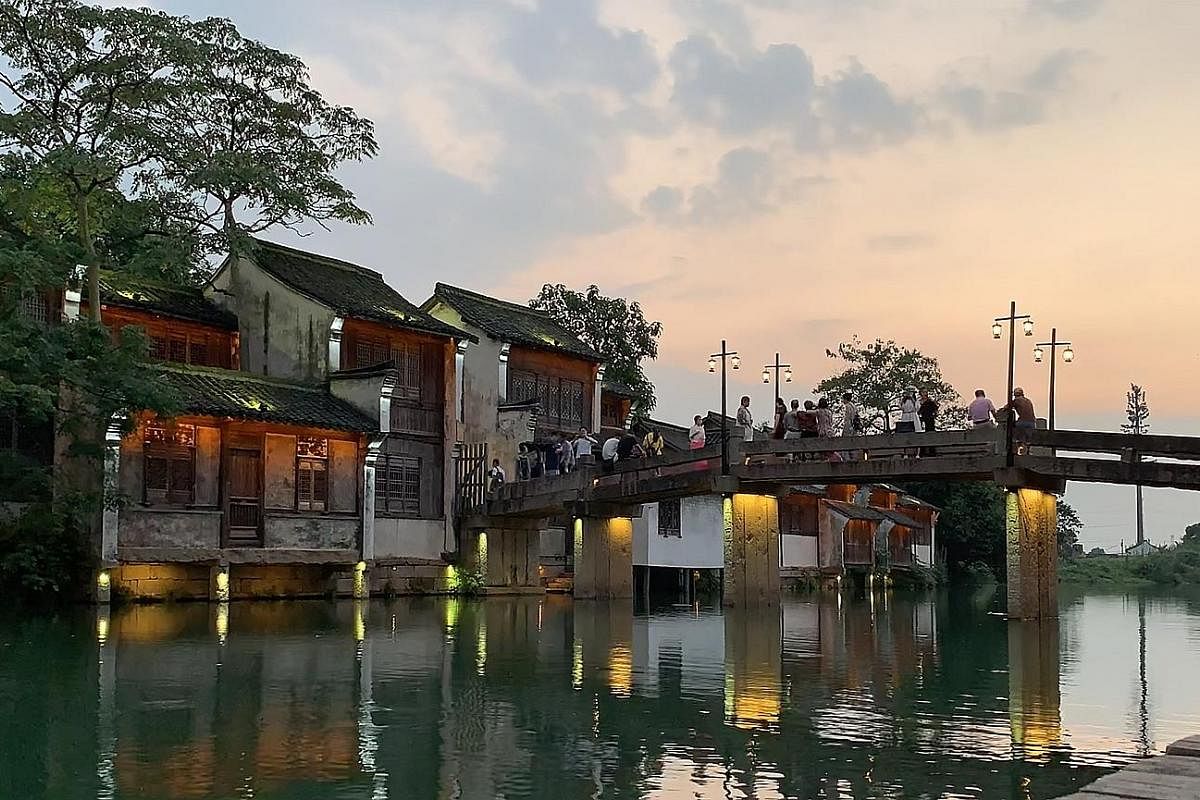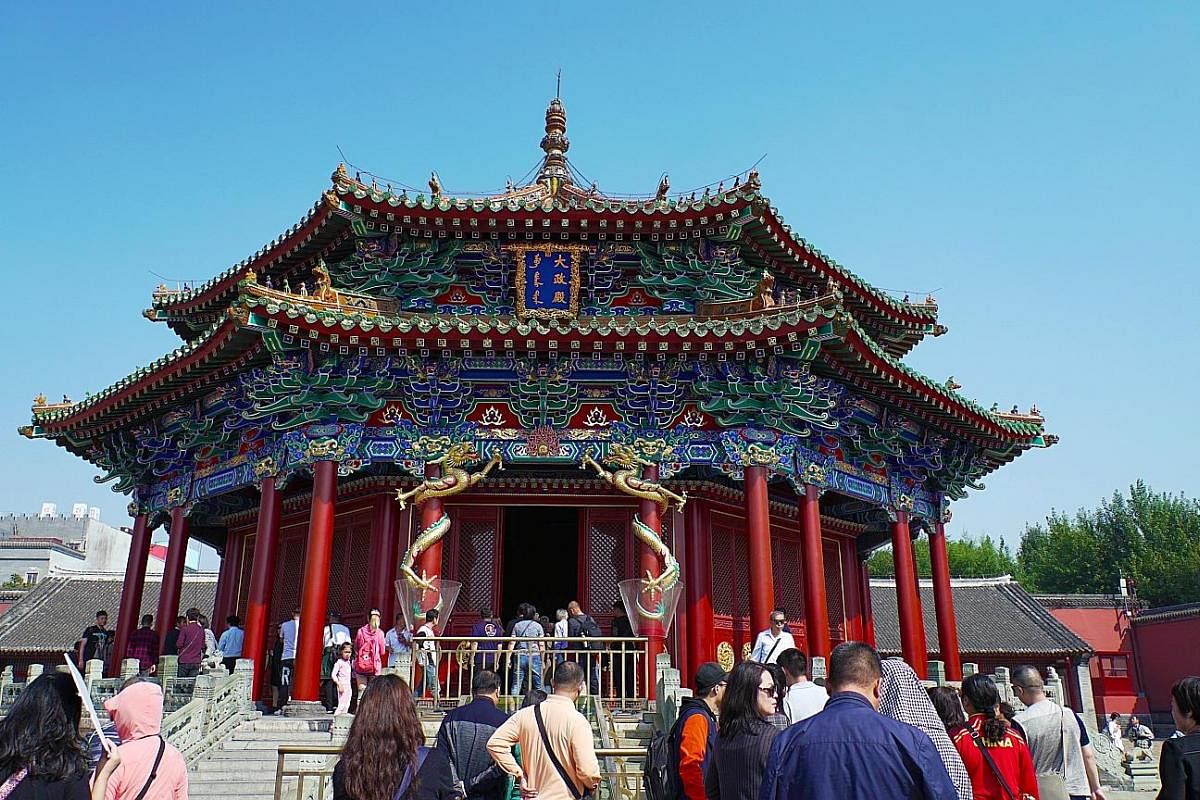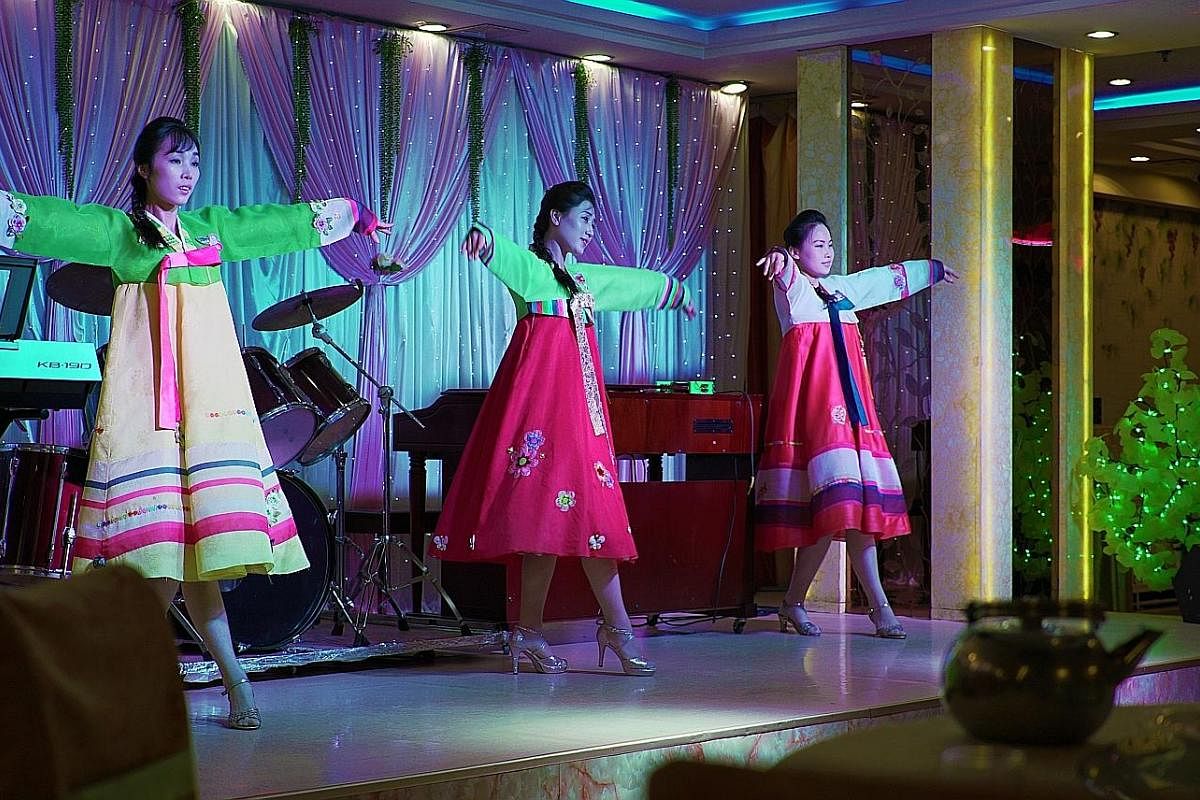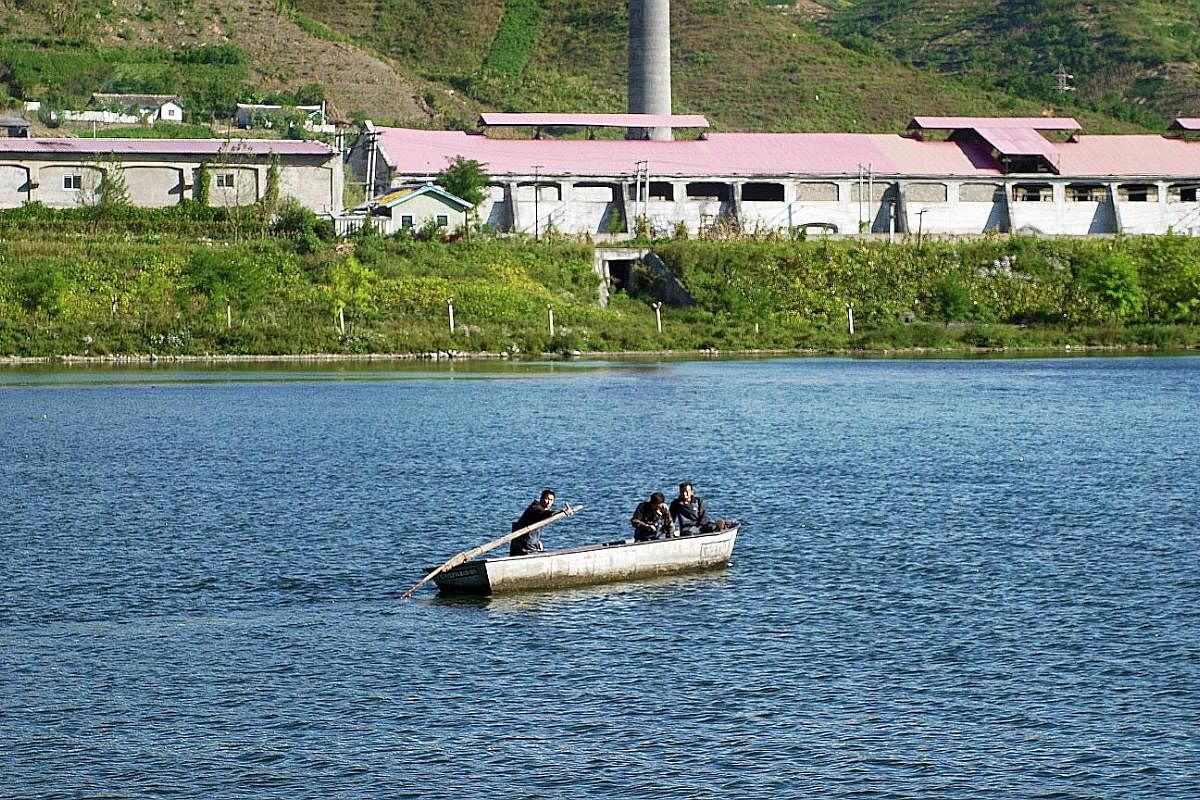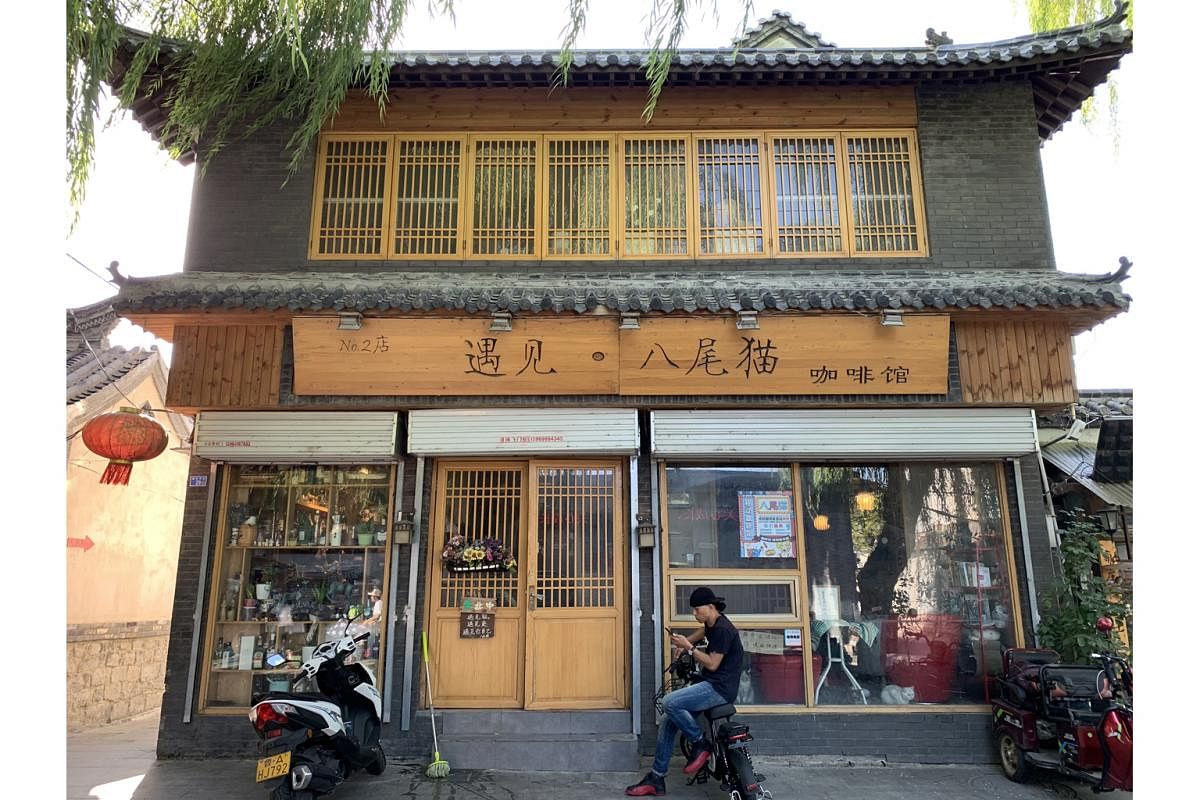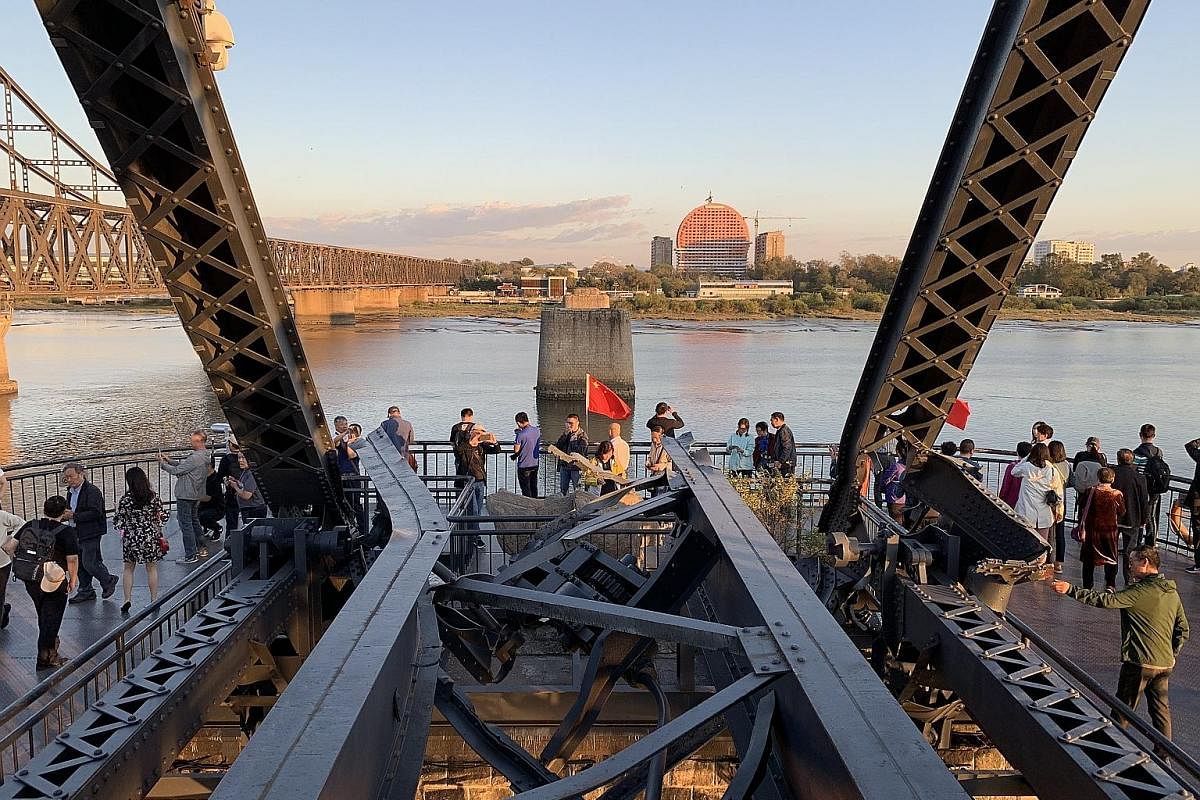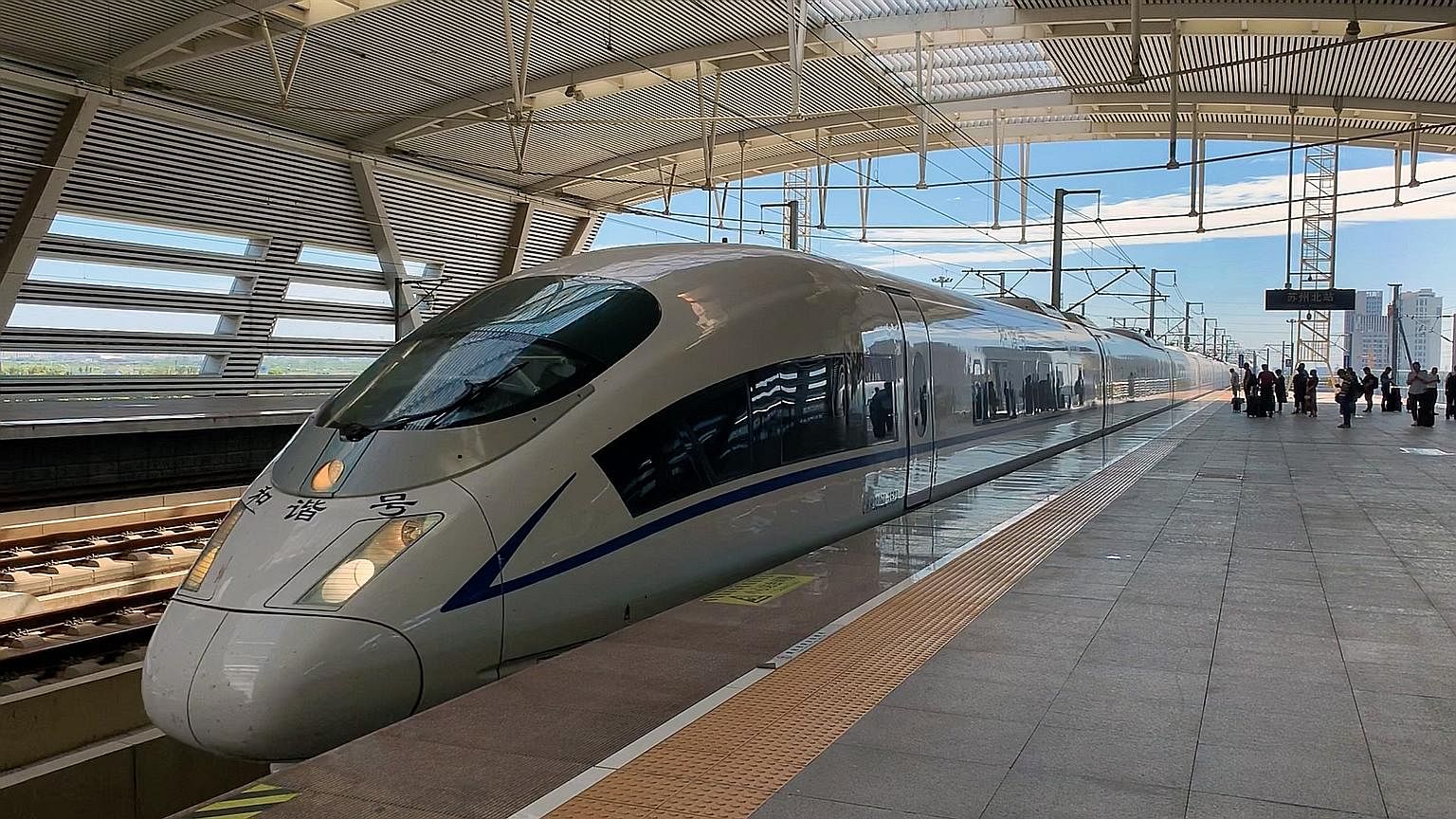China is vast and that becomes most palpable when speeding through the country on a bullet train. Mega-cities and modern industrial zones flash endlessly past my window at 300kmh.
But the country's high-speed-rail network - the world's longest at 30,000km this year and counting - also conveys an intimate portrait of the nation.
Like me, the traveller can plan forays into little water towns such as Wuzhen or the oldest existing section of the Great Wall in Jinan.
While the train network is all about on-the-dot schedules, it also empowers free spirits.
Towards the end of our week-long trip, The Sunday Times' executive multimedia videographer Ashleigh Sim and I decide to go off-plan and see how far the rail network can take us.
Rolling into the lesser-known Chinese city of Dandong to peer into North Korea turns out to be an easy day trip from Shenyang.
On our 2,000km journey northwards from Shanghai to Dandong, China feels at once ancient and cool.
In Jinan, a hipster cat cafe favoured by sullen, artsy millennials sits by a spring-fed canal in Qushuiting Street, where scholar-bureaucrats once composed poetry with trays of alcohol wafting on the water. In Shenyang, a Manchu palace complex with a faded glory is streets away from sleek skyscrapers with over-the-top illumination at night.
Such contrasting facets of China are heightened when superfast trains zip us from one experience to the next on a multi-city itinerary.
WUZHEN: Cool water world
Like Venice, China has towns built on intricate canal systems. We spend a day in Wuzhen, one of the pretty water towns in the triangle formed by fabled cities Shanghai, Suzhou and Hangzhou.
Wuzhen, at 1,300 years old, is a glimpse of Old China with its arched stone bridges and step-into-the-past experiences - a flower-drum street opera that depicts rural life and a niche Hundred-Bed Museum of antique beds, for instance.
Twice a day, on a lofty, swaying bamboo pole high above the water, an acrobat rivets tourists with terrifying stunts. It is far more serene to walk under indigo banners that evoke a period-drama scene at a dye workshop. Or to sip sanbai rice wine from a Ming-era distillery.
While I travel back in time in this eastern zone of Wuzhen, where residents still go about daily life amid gawkers, the revamped western part is more a mix of old and new.
Here, amid limpid canals and alleys, Wuzhen goes modern with an annual Internet conference and an international theatre festival.
The Mu Xin Art Museum, designed by top architect I.M. Pei's students Hiroshi Okamoto and Bing Lin, has an exhibition by French novelist and playwright Honore de Balzac in September when I visit.
Coolness also abounds in a wedding museum perfect for Instagram, boutique hotels and small, soulful bars by the water.
JINAN: Playful, poignant city
Jinan, a city of natural springs, is another portrait of cool China.
We go up the Thousand Buddha Mountain - by cable car, then on foot - for a view of modern Jinan. Better still, we whoosh down the foliage-clad hill in a luge, a fun ride of six minutes for me but less for speedsters.
The hill has buddha statues from the Sui dynasty (581 to 618) carved into the cliffs by devotees, while newer sculptures are planted along a paved trail.
China loves its QR codes. Even at the millennia-old Black Tiger Spring - so named because the small natural spring roars out from dark rock - I scan a QR code to activate a bronze sculpture. Spring water duly pours out and I sip.
Also whimsical is Kuanhouli Street, an enclave of indie shops, bars and hip hawker stalls. Mainly, it is where locals go for a walking feast under the night sky.
Savour "volcanic" or spicy barbecued squid, mini sushi, innards in hot broth, stinky tofu doused in mala sauce, traditional donkey dumplings, Italian desserts, trendy yogurt drinks, Thai tea and more.
It is fun to observe young Chinese enjoying old-school street snacks, from grilled pig's tail to braised trotters. Kuanhouli is playful, affordable, global, retro and local - a winsome combination for visitors.
Outside Jinan, the Great Wall of Qi is the oldest remnant of the fortification. The Qi state started building this section in 685BC.
What remains are piles of stones that seem unremarkable, but poignantly carry the story of China's past. I think about its wars and nomadic invasions, and the longevity of this civilisation.
SHENYANG: Imperial and multicultural
Entering Shenyang at twilight, the north-eastern city feels like a different China, with its Manchurian legacy and blend of Korean, Japanese and Russian influences.
The Mukden Palace, built in the image of the Forbidden City in Beijing in 1626, is the only remaining Manchu palace complex in the world. It is like a city with smaller palaces, a multitude of pavilions and a library. There are courtyards, gardens and passageways for a bit of respite from the summer crowd at the Unesco World Heritage Site.
There is a sense of grander days. Royal concubines liked tea tasting, calligraphy and dressing up - glazed crockery, fine hair combs and gems on display in one of the palaces allude to a languorous lifestyle.
Dwelling in China's north-east is a huge Korean diaspora. It includes the descendants of Koreans who fled to China after the 1910 Japanese Occupation. Now, North Koreans also work here.
Xita Street is a fusion experience of the two Koreas, where Pyongyang pomp meets K-pop.
In Pingrang Guan (Pyongyang Restaurant), spirited North Korean waitresses in high heels speak flawless Mandarin as they serve our flavourful lunch that includes cold noodles in a sweet-sour sauce and fresh cabbage kimchi.
Our server ushers us to a quieter spot, away from karaoke warblers. My English is "powerful", she decides.
But it is unreal to view what is on television in the dated, chandelier-lit space. Scenes of military splendour roll repeatedly across the screen.
When we return for that night's dinner show, she sends us to a table with two Chinese guests when she spies us loitering by a pillar in the full house.
Like her, the other waitresses - chosen for their beauty and talent - double as polished performers in hanbok and slinky satin. In between singing and dancing on stage, they hurry to the tables.
To round off our Korean moment, we pop into a market that peddles anything from fresh ginseng to kimchi. We stop by a small, stylish mall with K-cosmetic brands such as Etude House and Laneige.
I love lingering in Angel-In-Us Coffee, a chill second-floor cafe away from Shenyang's hubbub. We sink into plush armchairs surrounded by Korean chests for iced latte and light pastries.
DANDONG: Facing North Korea
We wonder how far the high-speed rail network can take us and decide to go further north, to Dandong, the Chinese city closest to North Korea.
For much of the world, Dandong is obscure. But its star will rise if there is a rapprochement between United States President Donald Trump and North Korean leader Kim Jong Un.
Already, the trains and trucks trundling between Dandong and Sinuiju on the North Korean side carry much of the trade between the two countries, even if United Nations sanctions have dampened activity.
The Yalu River separates the two cities, but they are only centimetres away at the closest point. A sign says: "One Stride Across".
On a cruise at the Yalu River Scenic Area, we catch glimpses of North Koreans, including three boatmen, a woman washing at the river's edge and a bare-chested man at a farm patch. There is also a cigarette factory and war relics, but otherwise, the scene looks pastoral in summertime.
This is the closest we can get to North Korea without a visa. It also makes us think: same countryside, different nations and divergent fates.
Later, in town, we head to the intriguing Yalu River Broken Bridge that once linked the twain. After the Americans bombed the bridge in 1950, the North Koreans dismantled the tangled mess on their side.
The Chinese converted the rest of the structure into an impressive walkway and a viewing platform. Here, from the middle of the river, I gaze at an abandoned Ferris wheel and water slide in Sinuiju. A circular peach hotel looks just as bereft as the empty amusement park.
Next to the dilapidated North Korean showcase, Dandong looks optimistic with its sleek buildings and relaxed weekenders - reflecting much of the verve and coolness I have encountered on my Chinese rail journey.
• Follow Lee Siew Hua on Twitter @STsiewhua.
• This story was brought to you by travel activities and services booking platform Klook.
• This concludes a three-part rail travel series that earlier highlighted Switzerland and Japan.
Speedy, comfy and right on time

